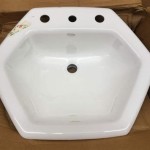How to Put Grout on Bathroom Wall Tiles
Grouting bathroom wall tiles is an essential step in completing a tile installation. It not only enhances the aesthetic appeal by filling the gaps between tiles, but also plays a crucial role in creating a waterproof and durable surface. This article provides a comprehensive guide on how to apply grout to bathroom wall tiles, ensuring a professional and long-lasting finish.
1. Prepare the Surface
Before applying grout, it is essential to properly prepare the tile surface. This involves cleaning the tiles and removing any excess mortar or debris.
- Clean the Tiles: Use a damp cloth or sponge to wipe away any dust, dirt, or mortar residue from the tile surface. For stubborn stains, a mild detergent solution can be used.
- Remove Excess Mortar: Using a grout float or a putty knife, scrape away any excess mortar that has squeezed out between the tiles during installation. The goal is to create clean, even grout lines.
- Allow the Mortar to Cure: Before grouting, ensure that the mortar used for tile installation is fully cured. This typically takes 24-48 hours, depending on the type of mortar and ambient temperature.
2. Choose the Right Grout
The type of grout used depends on various factors, including the type of tile, the size of the grout joints, and the desired aesthetic.
- Sanded Grout: This type of grout contains fine sand particles, making it suitable for wider grout joints (over 1/8 inch). It provides greater strength and durability, making it ideal for high-traffic areas like bathrooms.
- Unsanded Grout: Unsanded grout is typically used for narrower grout joints (less than 1/8 inch). It offers a smooth and polished finish, making it suitable for delicate tiles like glass or porcelain.
- Epoxy Grout: Epoxy grout is known for its exceptional durability and stain resistance. It is a good choice for areas where moisture and heavy use are common.
3. Mix the Grout
Mixing grout is an important step that requires the right consistency.
- Follow Manufacturer Instructions: Always refer to the manufacturer's instructions for specific mixing ratios and procedures.
- Use a Clean Container: Choose a clean bucket or container to mix the grout. This will prevent contamination and ensure proper consistency.
- Gradual Addition: Add water to the grout powder gradually, mixing thoroughly with a grout mixer or a drill with a mixing paddle attachment.
- Desired Consistency: The grout should have a smooth, creamy consistency, similar to peanut butter. It should not be too runny or too thick.
4. Apply the Grout
Applying grout requires a steady hand and a proper technique to ensure even distribution and a professional finish.
- Use a Grout Float: Hold the grout float at a 45-degree angle to the wall. Press the float firmly into the grout lines, ensuring that the grout is evenly distributed.
- Work in Small Sections: Divide the wall into smaller sections for easier application. This allows you to focus on each section without the grout drying prematurely.
- Remove Excess Grout: After applying grout to a section, use the grout float to remove any excess grout from the tile surface. Wipe the float clean after each pass.
5. Clean the Grout Lines
After the grout has set, it is time to clean the excess grout and create crisp, defined grout lines.
- Wait for Initial Setting: Allow the grout to set for approximately 15-20 minutes. This will allow the grout to slightly harden, making cleaning easier.
- Use a Damp Sponge: Dampen a clean sponge with water and gently wipe the tile surface, removing any excess grout. Be careful not to disrupt the grout in the lines.
- Rinse and Repeat: Rinse the sponge frequently in clean water to prevent the grout from clogging the sponge. Repeat the wiping process until all excess grout is removed.
6. Seal the Grout
Sealing the grout is an essential step in protecting it from stains, moisture, and wear and tear.
- Wait for Full Cure: Allow the grout to cure completely according to the manufacturer's instructions, typically 24-72 hours.
- Apply Grout Sealer: Apply a grout sealer to the entire surface, using a brush or a sprayer. Follow the manufacturer's instructions for application and drying time.
- Multiple Coats: Apply multiple coats of sealant for greater protection, especially in high-moisture areas like bathrooms.

How To Grout Tile In 6 Simple Diy Steps Architectural Digest

How To Grout Tile A Beginner S Guide The Created Home

Regrout Wall Tile Diy

How To Seal Grout Young House Love

How To Install A Shower Tile Wall Bathroom

How To Fix Holes In Shower Grout The Experts

How To Tile Your Bathroom Budget Dumpster

How To Tile A Bathroom Wall Granada Cement Blog Ideas Tips And More

Can I Put New Grout Over My Old The Medic

How To Renovate Bathroom Without Removing Tiles Multipanel
Related Posts







